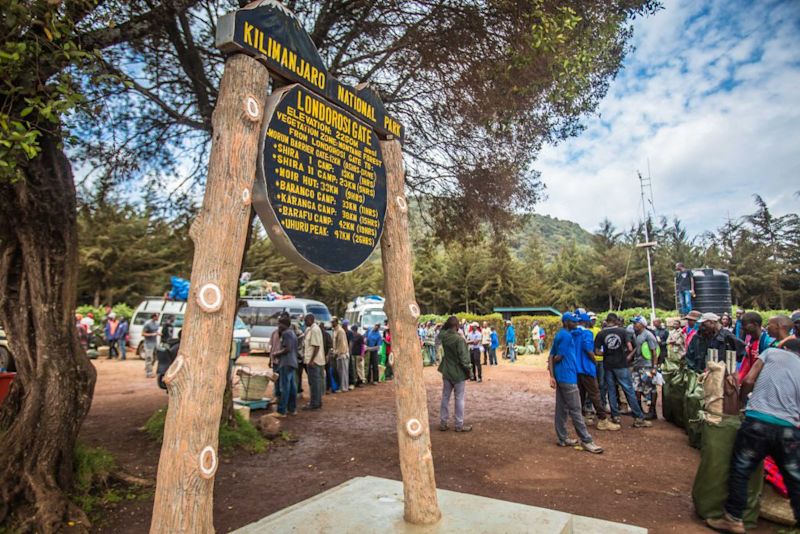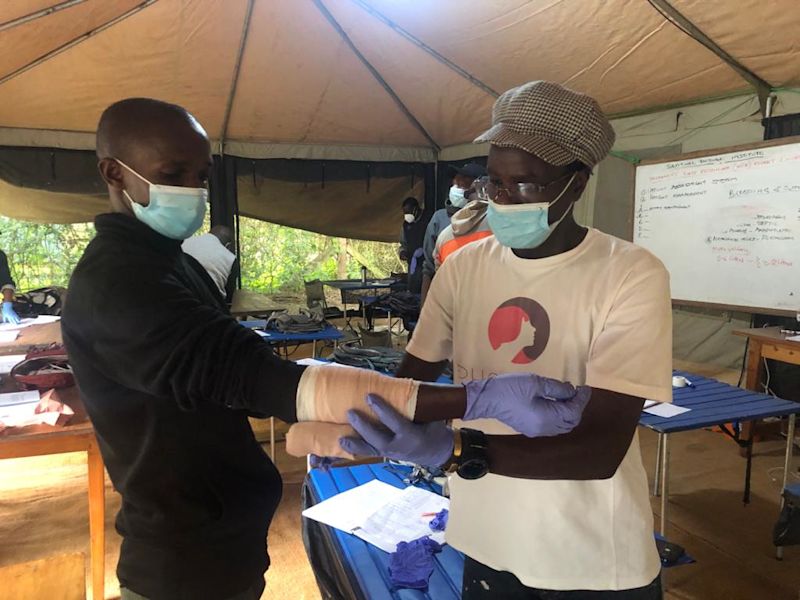In 1991, the Kilimanjaro National Park Authority (KINAPA) ruled that everyone who wants to climb Kilimanjaro must join a trek group led by a registered tour operator. And tour operators must assign a licensed guide to lead each group. So nobody is allowed to climb Kilimanjaro independently.
There are a few reasons for this decision, chief among which are climber safety and ensuring the local economy benefits from the trekking industry.
But your safety isn't the only reason why a trek guide is a good idea. , let's now discuss the reasons why climbing Kilimanjaro with a trek guide is in your best interests. There are quite a few!
Your guide checks your gear
Kilimanjaro guides know the weather and trekking conditions on Kilimanjaro well, as well as how these change with the seasons. They are also intimately familiar with camp life. So at the start of your adventure, before you even set out for the mountain, your guide will conduct a valuable gear check to ensure you're properly kitted out.* If it turns out that you lack something necessary, you can then buy or rent those items, often from your tour operator.
* We should perhaps point out that Kilimanjaro tour operators vary in terms of the quality of service they provide. We're describing the sort of service that we at Follow Alice offer, as do many of our competitors. But if you're considering trekking with a budget tour operator, note that they might not offer all of the valuable lead guide services we discuss in this blog post.
Your guide does your admin
Your guide takes care of all the admin involved in the climb for you. This includes signing you in and out of Kilimanjaro National Park at the start and end of your climb.
The lead guide oversees everything about your group's climb
Your guide briefs you and answers questions
Your trek guide is your number one source of info about the climb. It starts when they brief you at your welcome dinner about the climb in general. They also then brief you every night on the mountain about what to expect the following day. And if you have questions on the trail, they're your person too.
Linked to this, your guide is the leader of your whole expedition team, which includes the mountain crew climbing with you. So your guide is your go-to person if you have any requests or concerns, as not everyone on your mountain crew will speak English (or good English).
Each evening in the mess tent you receive a briefing on the next day's climb
Your guide ensures you don't lose your way
Kilimanjaro guides know the mountain super well, most having made tens if not hundreds of climbs up the mountain, using all of the different routes. So when you trek with a guide, there's no chance of getting lost.
Note that if you climb with a reputable Kilimanjaro tour operator, you won't have just one trek guide, but two (or even three for large groups). One of the guides will always be the lead guide, so that the lines of authority within the mountain crew are clear. The other is an assistant guide. Often, one guide leads the way, while the other brings up the rear. In this way, your guides are able to ensure nobody gets lost or feels unattended.
Kilimanjaro guides ensure you always stay on track
Your guide monitors your health and treats injuries
Kilimanjaro guides are there to ensure you don't develop severe altitude sickness (mild altitude sickness is normal, and not a real concern). They do this by observing you (they're highly familiar with the symptoms of altitude sickness) and using a pulse oximeter at least once a day to check the saturation of oxygen carried in your red blood cells.
All this said, please note that not all Kilimanjaro tour companies have the same health and safety measures in place. Nor do they train their guides as well, or ensure they take refresher first aid courses.
Please check that the tour operator you're considering using only employs guides who have up-to-date wilderness first responder (WFR) credentials. Also check that they supply their guides with the necessary medical equipment, which should include a canister of emergency oxygen.
There's more we could say on this topic, and you can find all of the important information in How we keep you safe on Kilimanjaro. But the main point here is that your guide is a qualified first aider, able to both monitor your health and attend to you if you become sick or injured.
WFRs are required to renew their training regularly
Your guide is your biggest cheerleader
Finally, but very far from least, your trek guide is there to cheer you on and believe in you. In fact, we cannot tell you how many past climbers have said that they wouldn't have reached the summit without the encouragement of their guides. It's basically a Kilimanjaro refrain.
Sometimes all that's needed by climbers is the reassurance of having their guide walking besides them at moments when they feel weak or unsure of themselves. At other times, a guide might literally take your hand to help you along, or carry your backpack for a bit, or do something else to help you to keep plodding.
While your safety is always your guide's primary concern, they also want to ensure you have a good experience and make it to the top!
Your guide also often serves as photographer 😊
Finally, if you're interested in possibly doing a Kilimanjaro climb with Follow Alice, you might like to Meet our awesome Kilimanjaro mountain crew.








